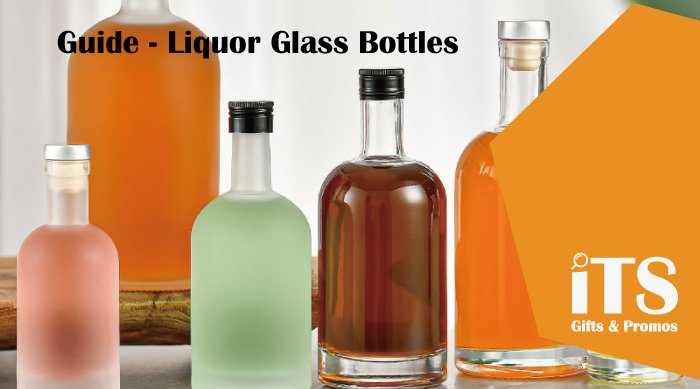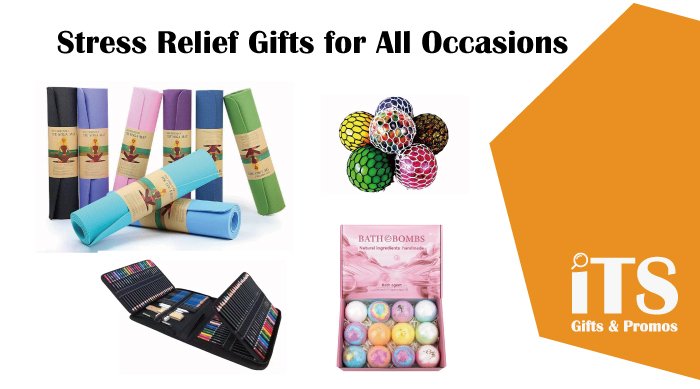
Best Kitchen Utensils Materials – How To Choose The Best One?
You Will Learn
When it comes to equipping your kitchen, the kitchen utensils materials play a pivotal role in defining both functionality and style. From the durability of stainless steel to the heat resistance of silicone, each material kitchen utensils are made from offers unique advantages and disadvantages. Whether you’re a seasoned chef or a home cook, understanding the best material for cooking utensils is essential. In this comprehensive guide, we will delve into the world of kitchen utensil materials, exploring a range of options from traditional to modern innovations. Prepare to discover how the right kitchen tools materials can transform your culinary experience.
Material Overview For Kitchen Utensils
- Nylon Utensils: A popular choice in modern kitchens, nylon utensils are known for their heat resistance and non-stick friendliness, ideal for use with Teflon-coated cookware.
- Silicone Utensils: Highly versatile, silicone kitchen tools are celebrated for their high heat tolerance and flexibility, making them safe for a variety of cooking surfaces.
- Stainless Steel Utensils: The choice for professional kitchens, stainless steel utensils offer unmatched durability and resistance to rust, though they can be heavier.
- Wooden Utensils: Timeless and eco-friendly, wooden kitchen utensils are gentle on cookware surfaces and offer natural antibacterial properties.
- Teflon: Non-stick and easy to clean, but with temperature sensitivity.
- Ceramic: Aesthetic and heat-retentive, but can be fragile.
- Aluminum: Lightweight and conducts heat well, but reactive with acidic foods.
- Plastic: Affordable and versatile, but not always heat resistant.
- Cast Iron: Extremely durable and retains heat, but requires regular seasoning.
- Copper: Excellent heat conductivity, but expensive and requires maintenance.
- Glass: Ideal for baking and storing, but not for direct cooking.
Each of these materials brings unique qualities to utensil equipment, affecting their use and longevity in the kitchen. The following sections will explore these materials in detail, helping you choose the best kitchen utensil material for your cooking needs.
Detailed Analysis of Each Material For Kitchen Utensils
1. Nylon Utensils
Pros: Lightweight and affordable, nylon utensils don’t scratch non-stick surfaces and are comfortable to handle.
Cons: They can melt or warp at high temperatures and aren’t as durable as metal utensils. Some concerns about leaching chemicals when overheated.

2. Silicone Utensils
Pros: Excellent heat resistance up to 600°F, flexible, and safe for non-stick surfaces. They don’t react with food or beverages.
Cons: Not as sharp or rigid as metal utensils, can retain odors, and lower durability compared to stainless steel.
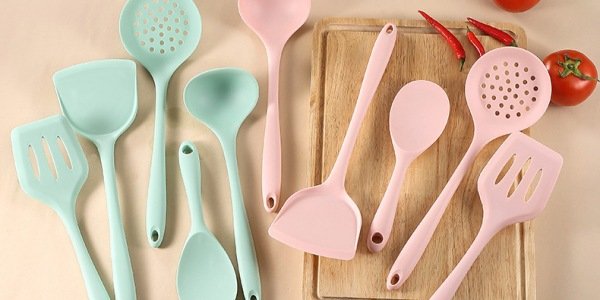
3. Stainless Steel Utensils
Pros: Highly durable, resistant to rust and corrosion, and can withstand high temperatures. Ideal for heavy-duty cooking.
Cons: They can scratch non-stick cookware surfaces, may be heavier, and can conduct heat, leading to hot handles.
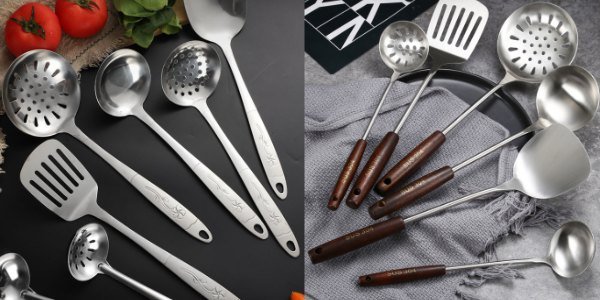
4. Wooden Utensils
Pros: Eco-friendly, non-reactive, and gentle on all cookware surfaces. Wooden utensils don’t conduct heat, keeping handles cool.
Cons: Can absorb odors and stains, require more maintenance, and are prone to cracking if not properly cared for.

5. Teflon (PTFE) Coated Utensils
Pros: Non-stick surface ensures easy food release and cleaning. Generally lightweight.
Cons: Can degrade and release harmful fumes at high temperatures. Scratching the surface can lead to peeling and flaking.
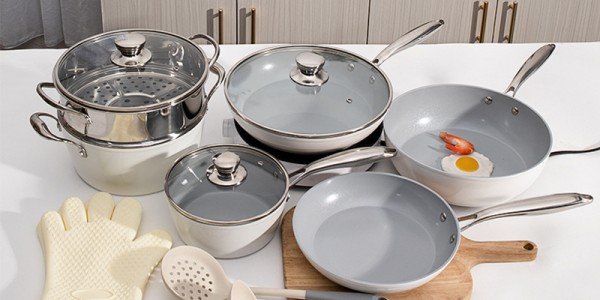
6. Ceramic Utensils
Pros: Non-reactive, maintaining the purity of food’s flavor. Often have an attractive design.
Cons: Less durable, prone to chipping or cracking, especially under extreme temperature changes.

7. Aluminum Utensils
Pros: Excellent heat conductivity, lightweight, and typically affordable.
Cons: Reactive with acidic foods, which can lead to metal leaching into food. Durability is lower compared to stainless steel.
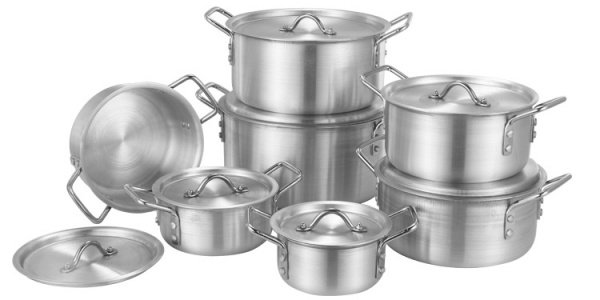
8. Plastic Utensils
Pros: Very affordable, lightweight, and available in various colors.
Cons: Not heat resistant, can melt or warp easily, and may contain harmful chemicals.
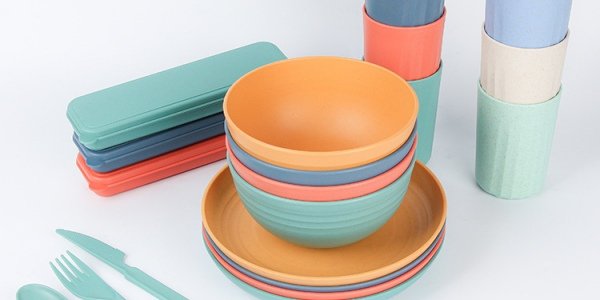
9. Cast Iron Utensils
Pros: Exceptionally durable, excellent heat retention, and add iron to food, which can be beneficial.
Cons: Very heavy, require seasoning and maintenance, prone to rusting without proper care.
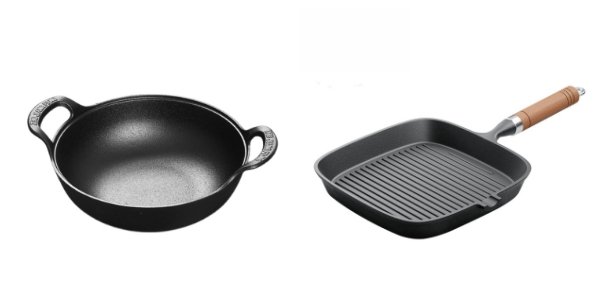
10. Copper Utensils
Pros: Superior heat conductivity, allowing for precise temperature control.
Cons: Expensive, reacts with acidic foods, and requires polishing to maintain appearance.

11. Glass Utensils
Pros: Non-porous, easy to clean, and doesn’t react with foods.
Cons: Fragile, not suitable for direct heat sources, limited in application compared to other materials.
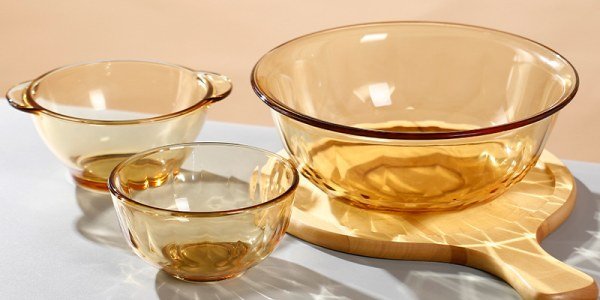
This analysis covers key aspects of kitchen utensil materials, focusing on heat resistance, durability, health safety, and environmental impact, offering a comprehensive understanding for choosing the right kitchen tools materials.
Comparative Evaluation Of Kitchen Utensils Materials
| Material | Cost | Lifespan | Specific Use-Cases |
|---|---|---|---|
| Nylon & Plastic | Most cost-effective, suitable for budget-conscious buyers | Less durable, prone to wear and tear over a few years | Best for light cooking and non-stick surfaces, not suitable for high heat |
| Silicone | Moderately priced, offers value for money | Good durability with proper care | Excellent for baking and gentle cooking; versatile for various kitchen tasks |
| Wood | Price varies with quality; generally affordable | Good lifespan but requires proper care to prevent cracking or rotting | Suitable for general mixing, stirring in all types of cookware, and serving |
| Stainless Steel | Ranges from moderate to high cost; professional-grade options are pricier | Extremely durable with decades-long lifespan if maintained properly | Ideal for high-heat cooking, searing, and professional culinary applications |
| Cast Iron & Copper | Premium pricing, especially for high-quality copper | Extremely durable with proper maintenance | Excellent for high-heat, heavy-duty cooking and grilling |
| Ceramic & Glass | Prices vary widely based on design and quality | Fragile, lifespan depends on careful handling | Best for baking, storing, and serving rather than direct cooking |
Which Kitchen Utensils Materials are Best for Health?
Determining the “best” cooking utensil material for health can vary based on specific use cases and personal preferences. However, several materials are widely recognized for their health safety:
- Stainless Steel: It’s non-reactive, meaning it doesn’t release harmful substances into food or react with acidic ingredients. Stainless steel is a popular choice for professional and home kitchens due to its durability and safety.
- Silicone: High-quality, food-grade silicone is heat-resistant and doesn’t leach chemicals. It’s especially good for non-stick cookware as it won’t scratch surfaces or release harmful compounds.
- Wood: Wooden utensils, particularly those made from hardwoods like bamboo or olive wood, are safe for most cooking tasks. They don’t react with food and can have natural antibacterial properties. However, they need regular maintenance to prevent cracking or splitting.
- Cast Iron: When properly seasoned and maintained, cast iron utensils can be a safe choice. They also have the added benefit of adding small amounts of iron to your diet, which can be beneficial.
- Ceramic: High-quality ceramic utensils are non-reactive and free from harmful chemicals like PFOA and PTFE, which are found in some non-stick coatings.
- Glass: Glass utensils are completely non-reactive and don’t leach chemicals into food. They are safe for storing and serving food, though not commonly used for cooking.
It’s important to note that whatever material you choose, using utensils that are free from harmful coatings and chemicals is crucial. Always opt for food-grade materials and avoid those known to degrade at high temperatures or release toxic substances. Additionally, proper maintenance and replacement of utensils when they show signs of wear are important for health safety.
Which Materials of Kitchen Utensils You’d Better Not Use?
When selecting kitchen utensils, it’s important to be aware of materials that could potentially pose health risks or decrease the quality of your cooking experience. Here are some materials you might consider avoiding:
- Non-Stick Coatings (like Teflon) on High Heat: Non-stick coatings such as Teflon (PTFE) can release toxic fumes when overheated. It’s best to avoid using non-stick utensils over very high heat and replace them if the coating starts to chip or peel.
- Cheap Plastic Utensils: Low-quality plastics can melt or leach chemicals into food, especially when used at high temperatures. Always opt for high-quality, heat-resistant plastics, preferably those labeled as BPA-free.
- Aluminum Utensils (with Raw Food): Although aluminum cookware is generally considered safe, it can react with acidic or alkaline foods, potentially leaching into what you’re cooking. Anodized aluminum is a safer choice as it is treated to prevent this reaction.
- Copper Utensils (Unlined): While copper utensils are excellent for heat conductivity, unlined copper can react with acidic foods, leading to ingestion of copper, which can be harmful in large amounts. Look for copper utensils lined with another metal, such as stainless steel.
- Old Ceramic Utensils with Lead-Based Glaze: Be cautious with older ceramic utensils, as they might be glazed with lead-based paint. When this paint chips or cracks, it can release lead into your food. Modern ceramics are generally safe, as lead-based glazes are now widely banned.
- Utensils with Damaged Surfaces: Regardless of the material, damaged or degraded utensils (like scratched non-stick pans, chipped ceramics, or rusty metal) should be replaced, as they can harbor bacteria or leach unwanted materials into food.
When in doubt, it’s a good practice to choose utensils made from high-quality, food-safe materials and to use them according to manufacturer guidelines. Regularly inspecting and replacing worn or damaged utensils can also help maintain a safe and efficient cooking environment.
Expert Insights and Personal Experiences – How To Choose The Best Kitchen Utensil?
Choosing the right material for your kitchen utensils and equipment based on the factors you listed involves a careful consideration of each aspect. Here’s how you can approach this:
- Price:
- Determine your budget for kitchen utensils. More expensive materials like stainless steel or copper offer durability but can be costly. Affordable options like nylon or plastic are budget-friendly but may not last as long.
- Balance cost with quality; investing a bit more initially can save money in the long run due to longer lifespan and better performance.
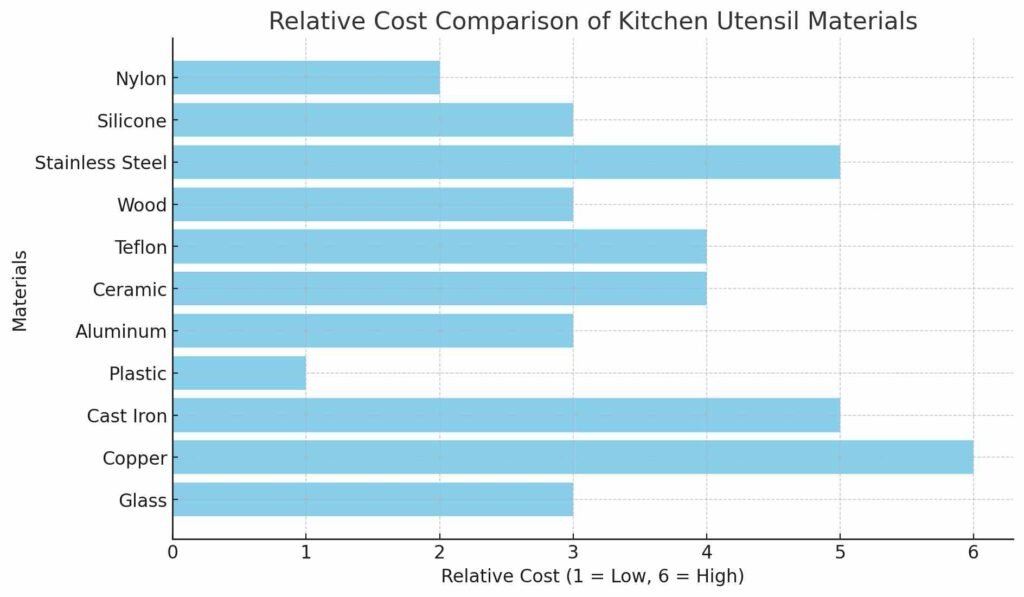
- Lifespan:
- Consider materials known for their durability, like stainless steel, cast iron, and certain woods like bamboo.
- Avoid materials that degrade quickly, especially under frequent use or high-heat conditions.
| Material | Lifespan |
|---|---|
| Nylon | Short – Medium (Prone to melting at high temperatures) |
| Silicone | Medium (Durable, but can degrade over time) |
| Stainless Steel | Long (Highly durable with proper care) |
| Wood | Medium – Long (Durable, but requires regular maintenance) |
| Teflon | Short – Medium (Coating can degrade with use and over time) |
| Ceramic | Medium (Durable but can chip or crack) |
| Aluminum | Medium (Can degrade, especially if not anodized) |
| Plastic | Short (Can warp or melt, especially at high temperatures) |
| Cast Iron | Long (Extremely durable with proper seasoning and maintenance) |
| Copper | Long (Durable but requires regular polishing and maintenance) |
| Glass | Long (Durable, but can break if dropped or exposed to sudden temperature changes) |
- Cleaning:
- Look for materials that are easy to clean and maintain. Stainless steel and silicone are generally dishwasher safe and easy to maintain.
- Be wary of materials that require special care, like cast iron (which needs seasoning) or copper (which may need polishing).
- Safe Level:
- Ensure the material is food-safe and non-toxic. Avoid materials that can leach chemicals into food, especially when heated.
- Look for certifications or labels indicating safety, such as BPA-free plastics or lead-free ceramics.
- Oven/Microwave Safe:
- If you require utensils for oven or microwave use, opt for materials that are safe and resistant to high temperatures, like silicone, metal, or certain types of glass and ceramics.
- Avoid plastics, non-oven-safe metals, and non-heat-resistant materials for these purposes.
- Heat Conduction:
- For cooking utensils, consider how well the material conducts heat. Materials like copper and aluminum are excellent heat conductors.
- For utensils like spatulas or spoons, consider heat resistance. Silicone and certain plastics can withstand high temperatures without melting.
In summary, the ideal material for your kitchen utensils should align with your cooking habits, maintenance preferences, safety concerns, and budget. It’s often beneficial to have a mix of materials to cater to different needs in the kitchen.
Stainless Steel Utensils – Different Materials You Should Know
As the most commonly used at home, Stainless steel kitchen utensils win all people’s likes. There are 3 different materials of stainless steel. Below you will see their comparisons.
| Grade | Chromium Content | Nickel Content | Additional Elements | Corrosion Resistance | Typical Use | Cost |
|---|---|---|---|---|---|---|
| 201 Stainless Steel | Lower (around 16%) | Lower | – | Lower | Budget-friendly utensils and appliances | Less expensive |
| 304 Stainless Steel | Higher (around 18%) | Moderate (8% or 10%) | – | High | Quality kitchen utensils, cookware, appliances | More expensive |
| 316 Stainless Steel | Higher (around 16%) | High (10%) | 2% Molybdenum | Very High | High-end, marine, chemical environments | Most expensive |
In Conclusion
Selecting the right kitchen utensil materials is vital for both culinary efficiency and safety. From the versatility of silicone to the durability of stainless steel, each material offers unique benefits and challenges.
Understanding these differences, including heat resistance, maintenance requirements, and health impacts, is key. Balancing these factors with cost considerations will guide you in making informed decisions.
Remember, the best choice depends on your cooking style, health concerns, and environmental considerations, ensuring a well-equipped and functional kitchen.
About ITS Promotion
We are ITS Promotion, a company of promotional items and sourcing based in China. Our extensive experience enables us to offer you highly professional services.
Interested in wholesaling or customizing any kitchen utensils? We can assist you in supplying customization upon your requests. Don’t hesitate to email us for more details.
Share This Post
Want To Get Promotional Products At Competitive Prices?
Our professional team will help you get whatever you want and finish all process.
We will provide a clear cost breakdown for your project, covering prototype creation, molding, testing, bulk orders, packaging, and shipping, along with expert advice on crafts, materials, and packaging.


